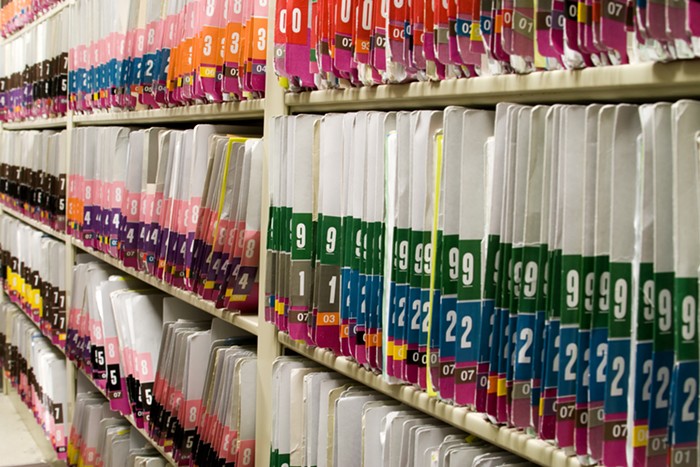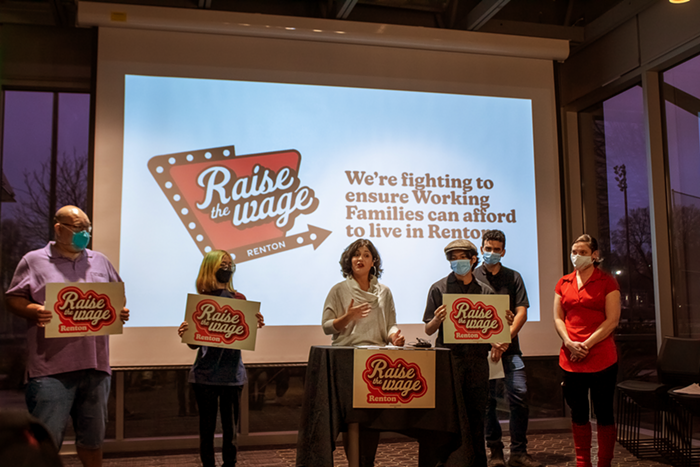The main package--called a Community Benefits District--will likely call for funding South Lake Union projects such as affordable housing, a City Light Substation, and parks to support hoped-for neighborhood growth around the biotech industry. The city would pay for it up front with councilmanic debt--the council's credit card--and get paid back by siphoning off 30 percent of increased revenue from the enhanced neighborhood. If tax revenues in South Lake Union's "benefits district" increased by $10 million, for example, $3 million of that would go to pay off the debt. Sounds fair, right? The neighborhood that benefits from city investment pays the city back.
It's not that simple, critics say. At best, the setup is risky. First of all, there's no guarantee that investment in South Lake Union will pay off--projections of the neighborhood's growth have been based on the physical capacity of the area, not biotech businesses' actual plans, a problem we reported first, and reported, and reported ["Playing the Numbers," May 22, 2003, and "South Fake Union," December 11, 2003]. And biotech success requires other factors, like venture capital, that are lacking in this region. Second, the deal takes an unprecedented strike at the city's tax system. Ordinarily, tax growth benefits the entire city--especially the areas that aren't booming. But if South Lake Union's profits are funneled back into the neighborhood, citywide basic services and less fortunate neighborhoods lose out, while Paul Allen's Vulcan--the area's biggest landholder--wins. It's a Catch-22; Neighborhoods that aren't prioritized in the first place--areas in the South End, for example--will miss out a second time now.
Council staffers left their meeting with Licata raring to go: They're going to scrutinize two South Lake Union projects already on the table--fixing the Mercer Mess and building a streetcar. "The staff's job is to point out holes to council members, and say 'Hey, this isn't the whole picture,'" Licata says. "Our job is to look out for the entire city."
The proposed Mercer Mess fix--turning the one-way arterial into a two-way boulevard--was already picked apart in a 2002 report: Reconfiguring Mercer Street as a two-way would decrease its vehicle capacity, and make traffic worse, that report said. A brand new study, still in draft form from consultant CH2M HILL, could be getting an overhaul because it reportedly has similarly dismal numbers for the project, according to council staff who've gotten a glimpse. Instead of the current 5-minute delay when traveling on Mercer, drivers would be set back up to 26 minutes by the year 2030 if Mercer were "fixed."
Eric Tweit, the Seattle Department of Transportation staffer working on the Mercer Corridor project, readily admits that the options for fixing the mess aren't necessarily going to turn the road into a speedway. "Nothing that we've seen out there is going to improve it compared to today," Tweit says. "But we don't want to make it worse [for vehicles], and we would like to make it better, certainly."
It seems SDOT already realized the new Mercer study will be picked apart by the council, damaging the mayor's Mercer plan. At stake is $2.5 million for a full environmental impact study of a Mercer fix. The council may balk at funding further study of a transportation project that doesn't improve transportation. "Why spend $100 million on something that doesn't work?" Licata asks. SDOT abruptly canceled a meeting about the study last week, citing problems with the "model" the study was based on.
The council staff also has the South Lake Union streetcar in its crosshairs. Another new SDOT study, by Parsons Brinkerhoff, lays out a ridership estimate, the costs of building the 2.6-mile line, and compares the proposed Seattle line to other cities' streetcar systems. The study paints a rosy picture for the streetcar: It's been wildly successful as a transportation system in cities like Portland and Tacoma. The study tags the South Lake Union streetcar as "the single most promising line for a new streetcar line in central Seattle."
That sort of a proclamation sounds like a green light for the controversial line. But when the report made its way down to the city council--the council had originally requested more details about the streetcar idea during budget talks last November--staffers noticed it was missing plenty of information. The study fails to answer the council's biggest question about the streetcar: How will the city pay to operate and maintain it? That tab is about $1.4 million per year. "Does the study that's just been submitted respond to the council's questions?" Transportation chair Richard Conlin asks. "That's the first thing we need to determine."
The mayor is expected to request release of $3 million in streetcar funding soon, but until the council's questions are answered, the request could be an uphill battle. Conlin hopes the council will give the streetcar a basic thumbs up or down before releasing money. "I'm not sure it makes much sense to continue planning if the council's not interested in pursuing this [streetcar] further," he says.


















